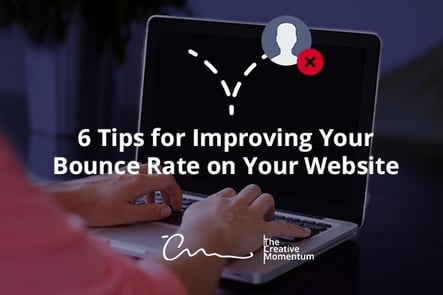
“Bounce” is an ugly word in online marketing. Google defines bounce as any session where only a single request is sent to its Analytics server. And while a certain amount of bounce is perfectly normal, it’s good practice to try to reduce the rate as much as possible.
1. Provide Relevant Content
When readers expect one thing and receive another, you have bounce. And your content is likely one of your biggest offenders. Begin by assessing your content and seeing whether it’s appropriate for your market. This means looking at the expectations you set through your SEO: Keywords, meta descriptions, and headlines all provide context for what’s to come. Make sure your on-site elements for each piece of content are coordinated so readers know what to expect.
2. Review External Links
If users don’t take any action on your page aside from clicking an outbound link, Google Analytics considers it a bounce. Now, this isn’t necessarily a bad thing. For example, if a user clicks a link to another one of your blogs, you’ll receive traffic for the new page while increasing your bounce rate on the primary page. It’s a mixed bag that makes bounce rates hard to pin down.
Your goal for external links is to review each one and determine whether you’ll benefit from users visiting it. If not, it might be worth ditching.
(As an aside, you can set specific links to trigger “Events” in Google Analytics—meaning that if they’re clicked, Google will log the event as a separate action instead of a bounce. Read more about Events here.)
3.Analyze Page Load Time
You’ve likely heard this one ad nauseum¸ so let’s not spend too much time on it. Page load speed is a known contributor to bounce—research compiled on Kissmetrics shows that up to 40 percent of users will abandon a website that takes more than three seconds to load.
4. Use High-Value Keywords
This one ties back into reader expectations. Which keywords are you using to drive traffic to your site? An effective keyword strategy will blend high-value, high-competition keywords with more specific, long-tailed keywords that directly match consumer intent. And remember, your keyword strategy isn’t just about SEO—it’s about the user experience. Keywords are the primary way users will find your site, so make sure your content delivers on your keyword promise.
5. Have Clear Navigation
There’s nothing more frustrating than trying to find your way around a page with poor navigation. And if your bounce rate is too high, your navigation might be to blame. This comes back to the UX. Users will be far more likely to ditch your site if they can’t immediately find what they’re looking for. Work on your navigation elements (ditch those hamburger menus!) and make the relationship between each of your pages clear.
6. Get Rid of Pop-ups
Obviously, you should purge any of the notorious advertising pop-ups that only junk websites have, but this isn’t the only type of pop-up you’ll have to consider.
A common marketing tactic these days is to hit users with pop-up windows immediately when they arrive on-site, forcing them to interact with your page before continuing (or leaving). These strategies may contribute to bounce, depending on your market. We suggest scrapping the instant pop-up and trying other options, such as scroll-triggered pop-ups or timed pop-ups that guarantee users are already interested in staying on-site before making contact.
Understanding Your Bounce Rate
With all the above in mind, we have to note that a high bounce rate isn’t always a bad thing. In fact, a bounce rate around 50 percent is considered perfectly normal. But if you’re struggling to reach the midline, or you’re interested in reaching the top echelons of bounce rates for specific pages, you might need some outside help. Contact a creative agency with experience in website optimization to help you get a handle on your bounce rate.


